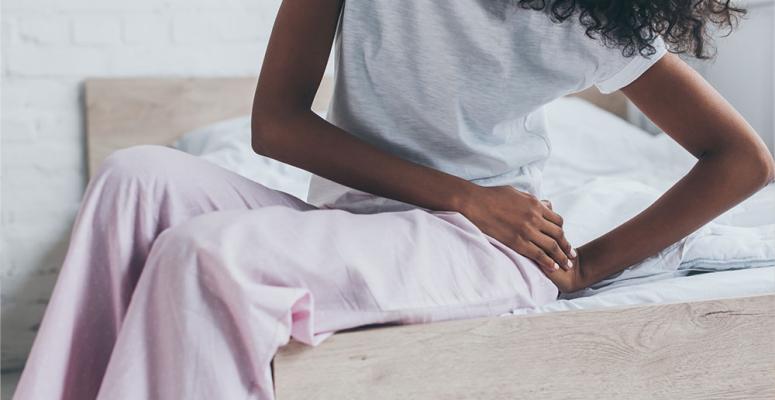
A study showed that about 2 out of every 1,000 people develop hip bursitis every year. Hip bursitis is a painful condition caused by inflamed bursae, which are fluid-filled sacs between soft tissue and bones. They help reduce the friction between bones by releasing synovial fluid that encourages joints to glide over each other easily.
When the bursae are irritated, however, they can swell and cause the hip joint to become tender. One of the most common types of hip bursitis occurs when the bursae at the point of the hip become irritated and inflamed. Hip bursitis is one of the most common causes of hip pain.
You can develop hip bursitis due to an injury to the point of the hip, overuse of the hip, incorrect posture or a preexisting condition. Symptoms of hip bursitis can include:
- Achiness or stiffness in the hip.
- Pain after movement.
- Swelling.
- Redness.
An active lifestyle, healthy diet and warmups before exercise can help prevent hip bursitis from developing. However, if you are already experiencing hip bursitis symptoms, exercises and stretches can help ease your pain and hasten recovery.
How long does recovery from hip bursitis take?
Unfortunately, the recovery time for hip bursitis can take quite a while. Many patients tend to recover in about six weeks, but others can spend as many as 12 weeks recovering from hip bursitis.
One way patients can speed up their recovery time is with physical therapy. In fact, one medical study showed that treatment plans that included physical therapy were 10% more effective than plans that didn’t include it. This is because physical therapy exercises can strengthen the hip and target inflammation. In addition, physical therapists can customize treatment plans that address a patient’s specific symptoms.
What exercises can decrease hip bursitis pain?
One study showed that there are two therapeutic exercises that are particularly helpful for hip bursitis. The following two exercises can target hip bursitis and relieve the swelling that causes hip pain:
Single leg glute bridge
A study showed that single leg glute bridges, or unilateral glute bridges, are a beneficial exercise for hip bursitis. This exercise is designed to strengthen the glutes without irritating already inflamed hip bursae. It also does not require outside equipment.
Single leg glute bridges can help patients increase their strength and mobility while reducing hip bursitis recovery time. A study even revealed that strengthening hip extensors like the glutes can alleviate pain associated with osteoarthritis and other hip conditions over time.
How to perform the single leg glute bridge exercise
- Lie down on a yoga mat or a bed with your arms by your sides and your legs straight.
- Tighten your abs and glutes to lift your hips off the floor.
- Continue to lift your hips until your body is straight from the shoulders to the knees.
- Slowly raise the unaffected leg until it’s extended straight out.
- Hold this position for three to five seconds.
- Return to the starting position and rest for 30 seconds.
- Repeat these steps until you’ve done five repetitions.
Clam exercise
The same study mentioned above reports the effectiveness of the clam exercise, also called the side-lying hip abduction exercise. Physical therapists can use this exercise to build strength in the gluteus medius muscle. It is also intended to balance and align the inner and outer thigh muscles. Doing so can reduce inflammation in the hip and boost hip bursitis recovery time.
How to perform the clam exercise
- Lie down on your side on the floor or a bed with your affected knee on top. Your knees should be stacked and bent at about 45 degrees.
- Engage your abs to stabilize your core.
- Slowly lift your upper knee as high as possible without tilting your hips backward. Keep your feet touching during this movement.
- Hold this position for two or three seconds, and then return your knee to the starting position.
- Continue to repeat these steps until you’ve done 15 to 20 reps.
Alliance PTP can help you find top-notch PT for hip bursitis
If you’ve been diagnosed with hip bursitis, you may benefit from physical therapy. At Alliance Physical Therapy Partners, we’re proudly bringing together physical therapy practices across the country to help people get the high-quality PT they need. Want to see a physical therapist in person? We can put you in touch with an Alliance PTP partner that’s close to you and that can help you address your hip pain.
Not keen on in-person PT sessions or not close to an Alliance PTP partner? No worries. We also offer effective and affordable virtual physical therapy through our Agile Virtual Physical Therapy platform.
Contact our team today so we can help you find the most effective physical therapy services for your hip pain.
*Note: This article is a revision of one originally posted by Alliance Physical Therapy partner Peak Performance Sports and Physical Therapy.
Get Help at a Location Near You
